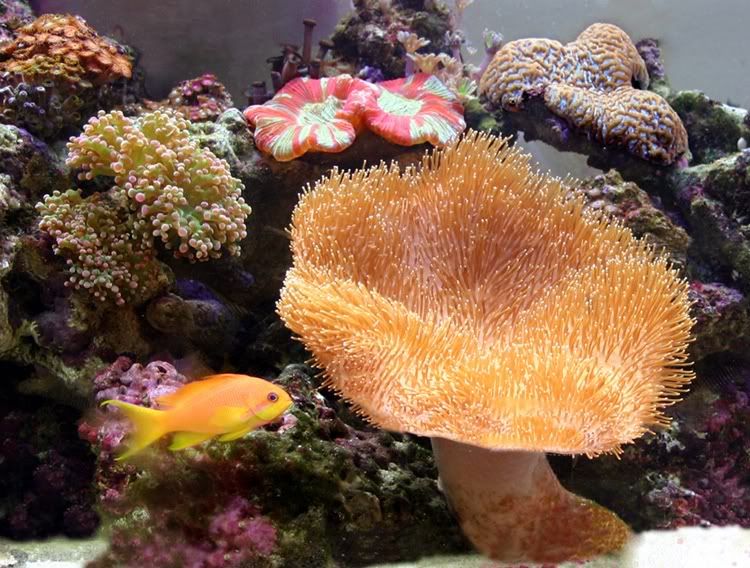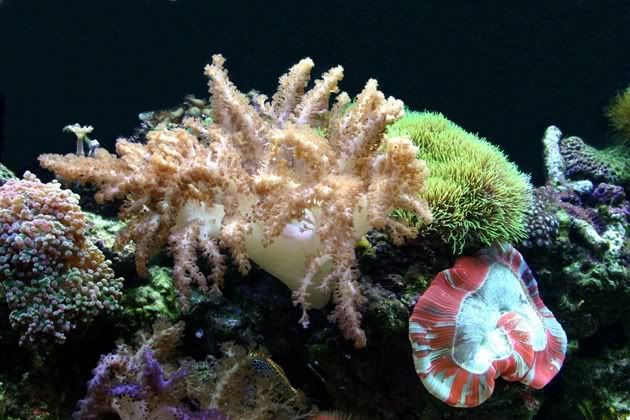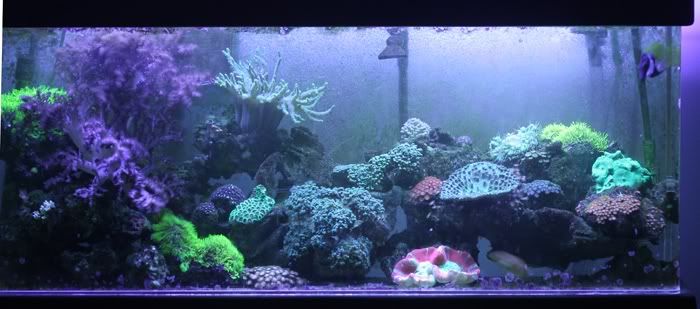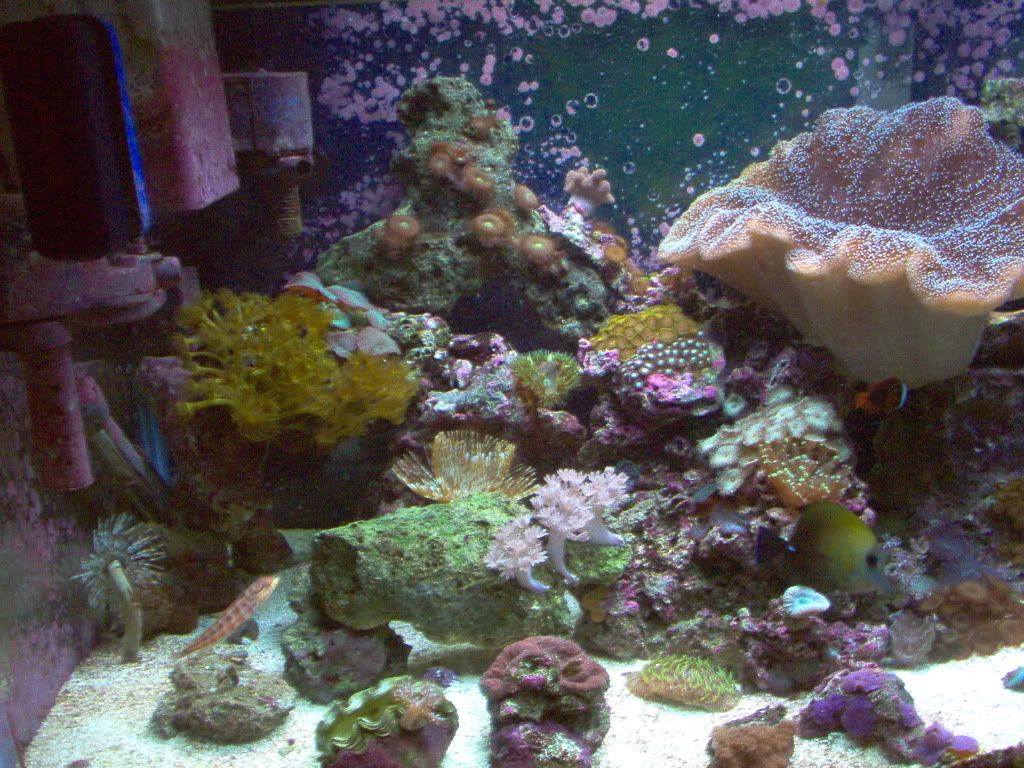Good discussion. I do agree that you can house them together, I did so...but carbon and keeping things separated will only work to a point, assuming your corals grow. And this is just a thing to consider. 29g is a small tank.
The second pic below (not a great one

) is what I consider to be larger leathers, they take up the majority of my 45g tank, along with Anthelia that I've let run loose recently. (I have another frag in the 4" range and another leather about half the size of those shown that are not in the picture)
I have observe inhibition of stony corals as these guys have grown, and must definitely agree with Eric Borneman on what I observed (google: borneman sarcophyton toxic reefs - it is the second article). This was the product of my own research into why I was starting to lose hard corals as these started to thrive.
These compounds are so effective that in almost no cases will stony corals be unaffected by them, and growth inhibition, local necrosis and death usually ensue contact of Sarcophyton corals. In other words, in a war between soft corals and hard corals, the soft corals will almost invariably be victorious.
Given this information, and the obvious complications that arise in a close system aquaria, it should not be surprising that there are beginning to be many reports of mysterious unexplainable recession of stony corals in tanks housing large specimens or many types of soft corals. Some stony corals seem infinitely more sensitive to the terpenoid compounds of Sarcophyton . Others seem comparatively unaffected. However, the obvious zonations that occur in the wild should be carefully considered, and it is my opinion that soft corals and hard corals should be minimally intermixed, if at all. Sarcophyton , being considered a highly toxic species, does not seem to be a wise choice for displays with stony corals. The soft corals are all beautiful and hardy corals in their own right, but if we as hobbyists begin to learn about habitats and the physiology and biology of our captive corals, we must also bear the responsibility of maintaining proper conditions for them. I feel that foresight should be used in planning reef aquariums, and it should be decided in advance if an aquarium will be a relatively easy and quite beautiful display of soft corals, or if it will house stony corals. Sarcophytons are exceptional corals that are fast growing, hardy, and reproducible. This makes them highly desirable, but just as we would not keep a parrotfish with our stony corals, Sarcophyton deserves similar respect for its own health... and the health of all the other inhabitants in the tank. The risk of one damaging other corals or killing fish is not worth the selfish motivation to keep all the species of a reef within one display.
So in the tanks shown above, I think it can be done. The leathers can be kept distant and are not taking up a great deal of room. However, in tanks where the leather certainly can grow proportionally large relative to tank volume, it is a very real issue with keeping them both. In any tank where they become a display piece, I think it is a risk (as you may not even see warfare yet it is happening).
I do not think it happened in the OPs case.
But, while on the topic,
I would not house stony corals in a small tank with leathers. IMO, eventually something will give. It can work on some scale, but there is a real risk. It happens for me that leathers are good for my situation at the moment, since I've lacked time to dedicate to the tank. Sacrificed color and diversity for movement and ease.
The first pic was like 5 years ago, with an variety of easy frags growing in (including the "baby" leathers). The second is now. It is a 36" long 45g tank. The risk with leathers is they grow BIG and people like them as centerpieces...instead of making the call to remove. Ya takes your chances












